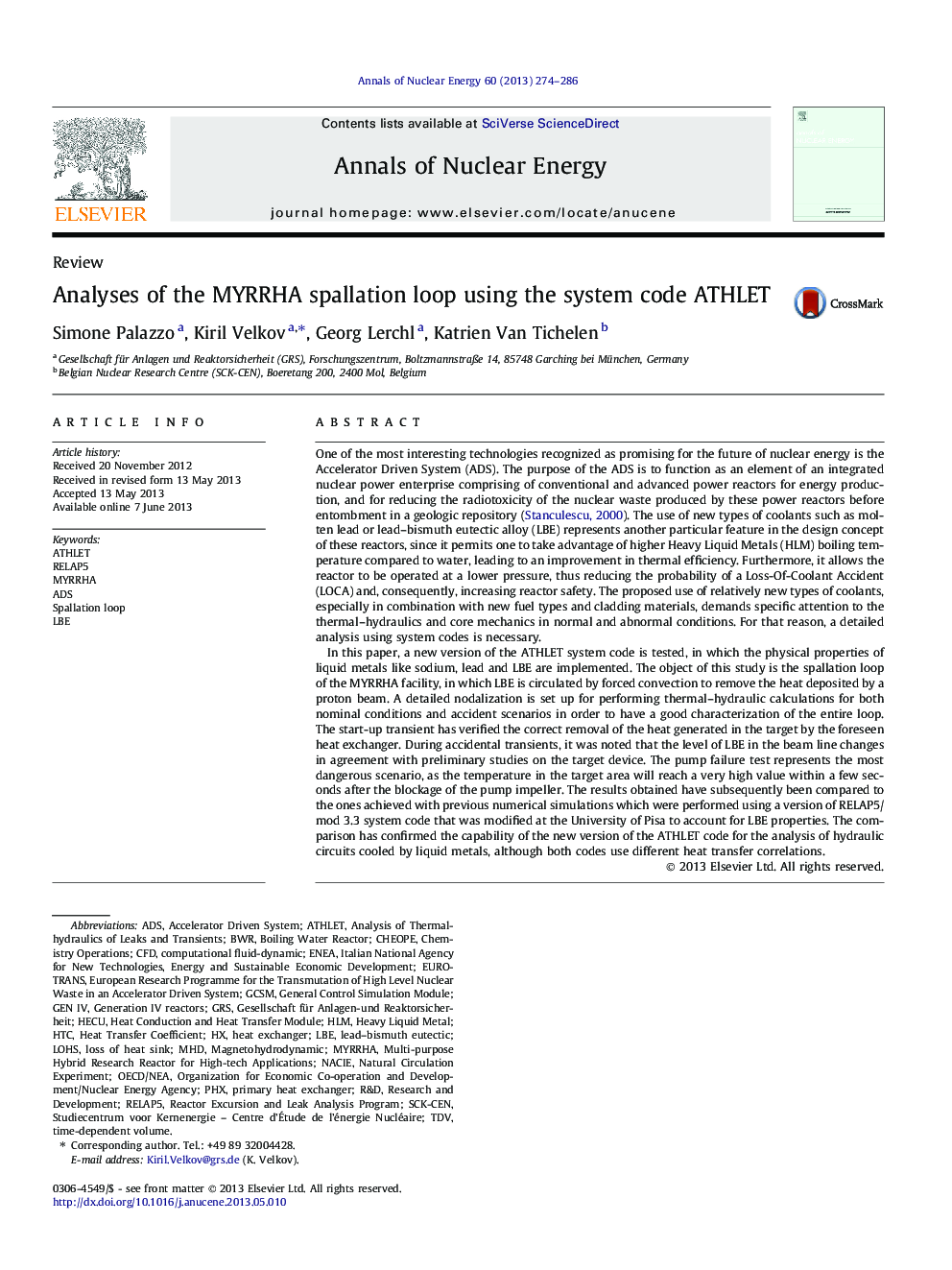| Article ID | Journal | Published Year | Pages | File Type |
|---|---|---|---|---|
| 8070129 | Annals of Nuclear Energy | 2013 | 13 Pages |
Abstract
In this paper, a new version of the ATHLET system code is tested, in which the physical properties of liquid metals like sodium, lead and LBE are implemented. The object of this study is the spallation loop of the MYRRHA facility, in which LBE is circulated by forced convection to remove the heat deposited by a proton beam. A detailed nodalization is set up for performing thermal-hydraulic calculations for both nominal conditions and accident scenarios in order to have a good characterization of the entire loop. The start-up transient has verified the correct removal of the heat generated in the target by the foreseen heat exchanger. During accidental transients, it was noted that the level of LBE in the beam line changes in agreement with preliminary studies on the target device. The pump failure test represents the most dangerous scenario, as the temperature in the target area will reach a very high value within a few seconds after the blockage of the pump impeller. The results obtained have subsequently been compared to the ones achieved with previous numerical simulations which were performed using a version of RELAP5/mod 3.3 system code that was modified at the University of Pisa to account for LBE properties. The comparison has confirmed the capability of the new version of the ATHLET code for the analysis of hydraulic circuits cooled by liquid metals, although both codes use different heat transfer correlations.
Keywords
Related Topics
Physical Sciences and Engineering
Energy
Energy Engineering and Power Technology
Authors
Simone Palazzo, Kiril Velkov, Georg Lerchl, Katrien Van Tichelen,
